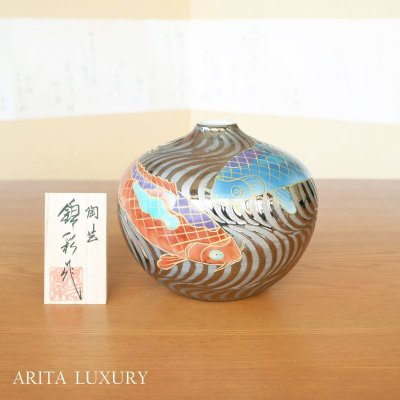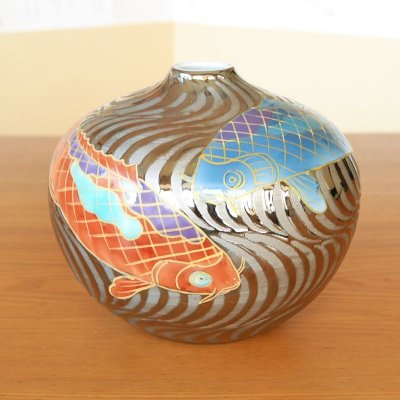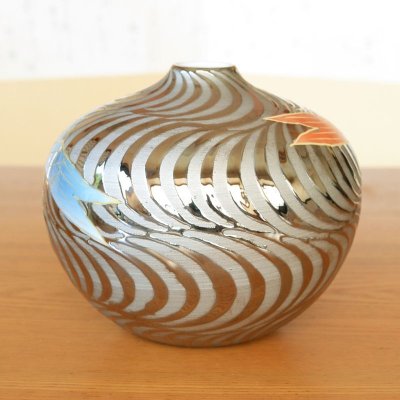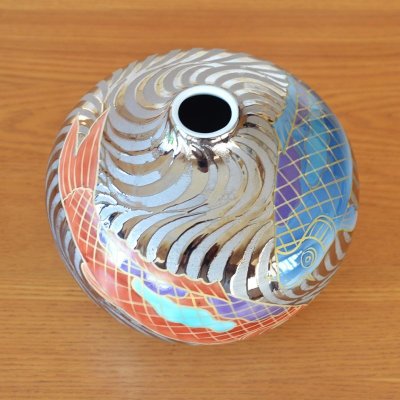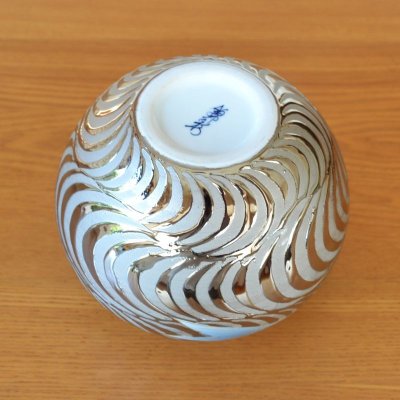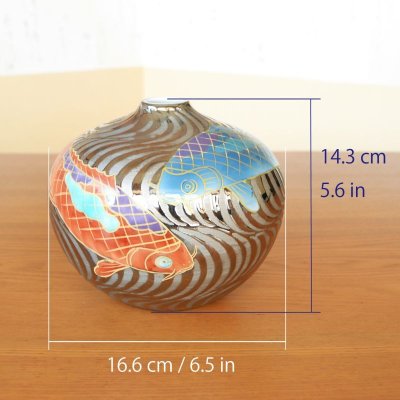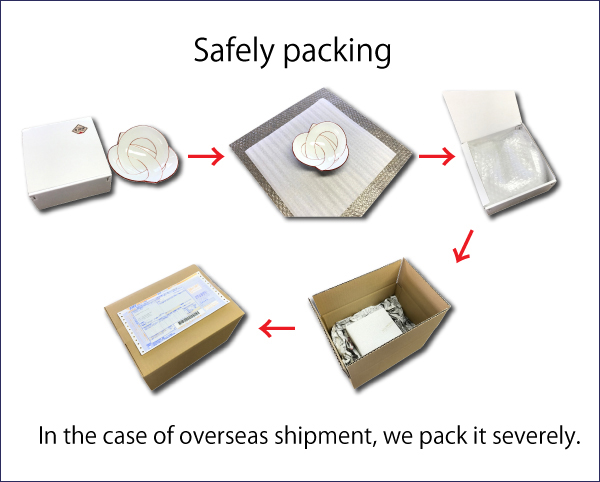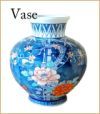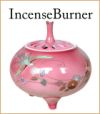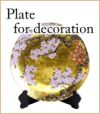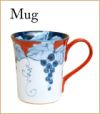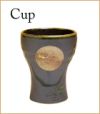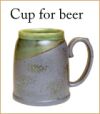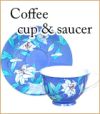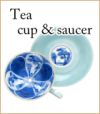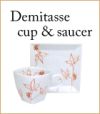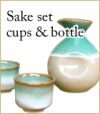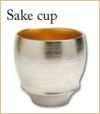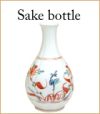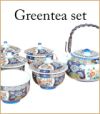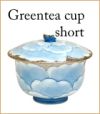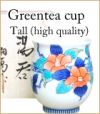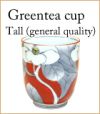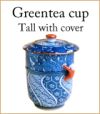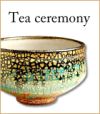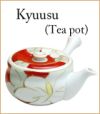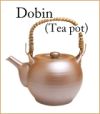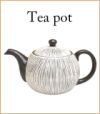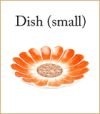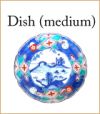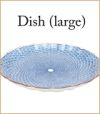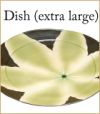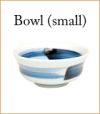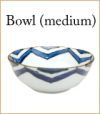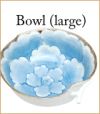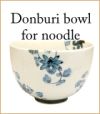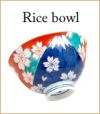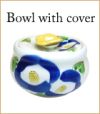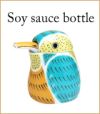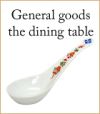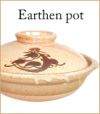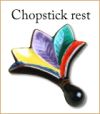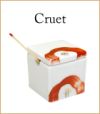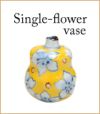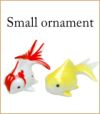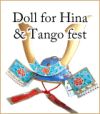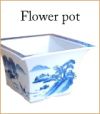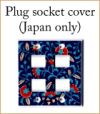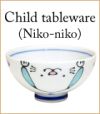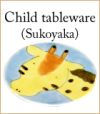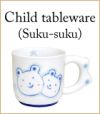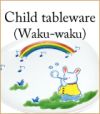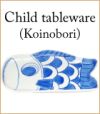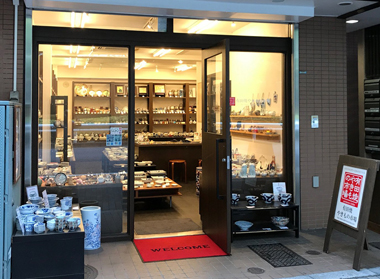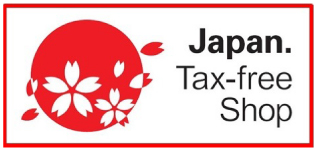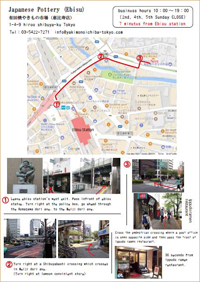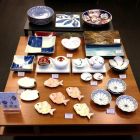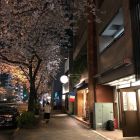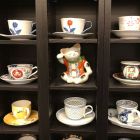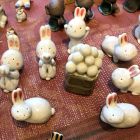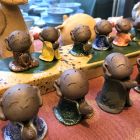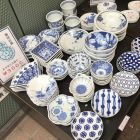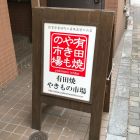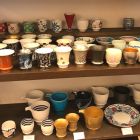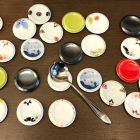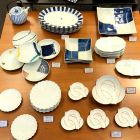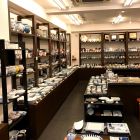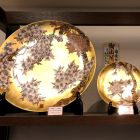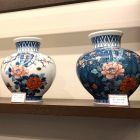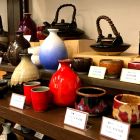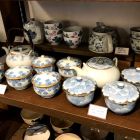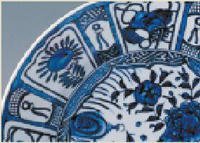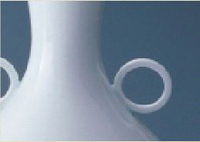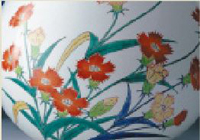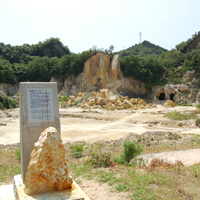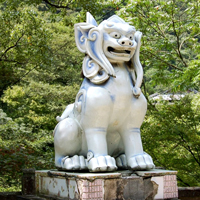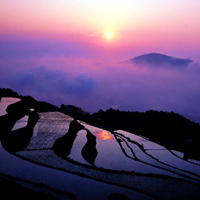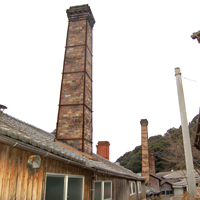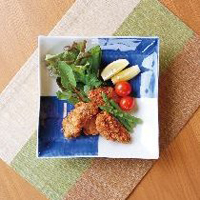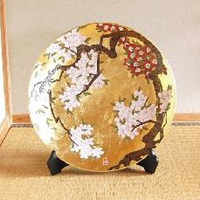Small Vase Koi Carp Platinum Color Ryusui | Fujii Kinsai's work [217090]
Small Vase Koi Carp Platinum Color Ryusui | Fujii Kinsai's work
[217090]
Price: 132,000JPY
Weight: 2000g
Low stock
[size]
Width: 16.6cm / Height: 14.3cm
Width: 6.5in / Height: 5.6in
-----------------------------
This is a work by Kinsai Fujii, a leading ceramic artist in the creation of Arita porcelain art. This small vase depicts the elegant swimming of koi fish, which symbolize wealth and prosperity. The contrast between the blue and red of the koi fish and the silver color called platinum glaze makes this piece stand out with a strong presence.
Koi fish are cherished worldwide as ornamental fish due to their beautiful appearance and strength. Particularly in Japanese and Chinese cultures, koi fish are known as symbols with various positive meanings. They symbolize "prosperity and wealth," "longevity and health," and "strength and perseverance," among other positive attributes.
As a symbol of "prosperity and wealth," koi fish are associated with their vibrant colors and high value, representing abundance and financial success. Especially golden and red koi are believed to attract good fortune and wealth, making them popular symbols for wishing for prosperity and success. This piece also features a vividly depicted red koi.
As a symbol of "longevity and health," koi fish also represent long life. Since koi fish themselves are known for their long lifespan, they are also considered symbols of longevity and health. The koi motif is often chosen particularly when praying for health and longevity.
As a symbol of "strength and perseverance," there is a Chinese legend that a koi fish that successfully climbs a waterfall will transform into a dragon. This legend makes koi a symbol of strength and endurance. As a symbol of the power to overcome difficulties, koi fish embody the meaning of supporting and encouraging those who strive and persevere.
Additionally, koi fish swimming gracefully in the water are also symbols of purification and purity. The water depicted with platinum glaze symbolizes purity and purification. The image of koi swimming brings a sense of cleansing and spiritual clarity.
Standing at a compact height of 14.3 cm, this small vase is popular for its size, which harmonizes well with modern living spaces. It is also ideal as a gift or for special occasions. This masterpiece embodies the pinnacle of craftsmanship in potter's wheel, painting, and firing techniques.
[Potter Profile]
Kinsai Fujii
Kinsai Fujii's works are characterized by their luxurious finish using the overglaze enamel (nishiki) technique. He utilize metallic hues such as gold and platinum, as well as traditional Arita nishiki colors like red, green, and purple, showcasing strong individuality in their creations
Kinsai Fujii's career is as follows :
Born in 1976 in Arita, Saga Prefecture, Japan.
Entered the wheel-throwing department at Saga Prefectural Arita Ceramic Technical School in 1991.
Studied under Living National Treasures Manji Inoue and Shigemasu Kajiwara in 1991.
Held the "Kinsai Fujii Exhibition" at Fukuoka Prefectural Museum of Art and Hita City Museum of Art in 2003.
Held the "Kinsai Fujii Exhibition" at Ehime Prefectural Museum of Art Branch in 2004.
Held numerous solo exhibitions at department stores and other venues nationwide since 1999.
[Main Awards]
Nagasaki Ceramics Exhibition, Asahi Shimbun Award
Kyushu-Yamaguchi Ceramics Exhibition, Selected
Workers' Art Exhibition, Minister of Labor Award
Asahi Ceramics Exhibition, Selected
Governor's Rotation, Saga Prefectural Governor's Award
Asia Craft Exhibition, Selected
And many others
Width: 16.6cm / Height: 14.3cm
Width: 6.5in / Height: 5.6in
-----------------------------
This is a work by Kinsai Fujii, a leading ceramic artist in the creation of Arita porcelain art. This small vase depicts the elegant swimming of koi fish, which symbolize wealth and prosperity. The contrast between the blue and red of the koi fish and the silver color called platinum glaze makes this piece stand out with a strong presence.
Koi fish are cherished worldwide as ornamental fish due to their beautiful appearance and strength. Particularly in Japanese and Chinese cultures, koi fish are known as symbols with various positive meanings. They symbolize "prosperity and wealth," "longevity and health," and "strength and perseverance," among other positive attributes.
As a symbol of "prosperity and wealth," koi fish are associated with their vibrant colors and high value, representing abundance and financial success. Especially golden and red koi are believed to attract good fortune and wealth, making them popular symbols for wishing for prosperity and success. This piece also features a vividly depicted red koi.
As a symbol of "longevity and health," koi fish also represent long life. Since koi fish themselves are known for their long lifespan, they are also considered symbols of longevity and health. The koi motif is often chosen particularly when praying for health and longevity.
As a symbol of "strength and perseverance," there is a Chinese legend that a koi fish that successfully climbs a waterfall will transform into a dragon. This legend makes koi a symbol of strength and endurance. As a symbol of the power to overcome difficulties, koi fish embody the meaning of supporting and encouraging those who strive and persevere.
Additionally, koi fish swimming gracefully in the water are also symbols of purification and purity. The water depicted with platinum glaze symbolizes purity and purification. The image of koi swimming brings a sense of cleansing and spiritual clarity.
Standing at a compact height of 14.3 cm, this small vase is popular for its size, which harmonizes well with modern living spaces. It is also ideal as a gift or for special occasions. This masterpiece embodies the pinnacle of craftsmanship in potter's wheel, painting, and firing techniques.
[Potter Profile]
Kinsai Fujii
Kinsai Fujii's works are characterized by their luxurious finish using the overglaze enamel (nishiki) technique. He utilize metallic hues such as gold and platinum, as well as traditional Arita nishiki colors like red, green, and purple, showcasing strong individuality in their creations
Kinsai Fujii's career is as follows :
Born in 1976 in Arita, Saga Prefecture, Japan.
Entered the wheel-throwing department at Saga Prefectural Arita Ceramic Technical School in 1991.
Studied under Living National Treasures Manji Inoue and Shigemasu Kajiwara in 1991.
Held the "Kinsai Fujii Exhibition" at Fukuoka Prefectural Museum of Art and Hita City Museum of Art in 2003.
Held the "Kinsai Fujii Exhibition" at Ehime Prefectural Museum of Art Branch in 2004.
Held numerous solo exhibitions at department stores and other venues nationwide since 1999.
[Main Awards]
Nagasaki Ceramics Exhibition, Asahi Shimbun Award
Kyushu-Yamaguchi Ceramics Exhibition, Selected
Workers' Art Exhibition, Minister of Labor Award
Asahi Ceramics Exhibition, Selected
Governor's Rotation, Saga Prefectural Governor's Award
Asia Craft Exhibition, Selected
And many others
 |
Import duties, taxes, and charges are not included in the item price or shipping cost. To residents of Europe: |
Source: www.exchange-rates.org
